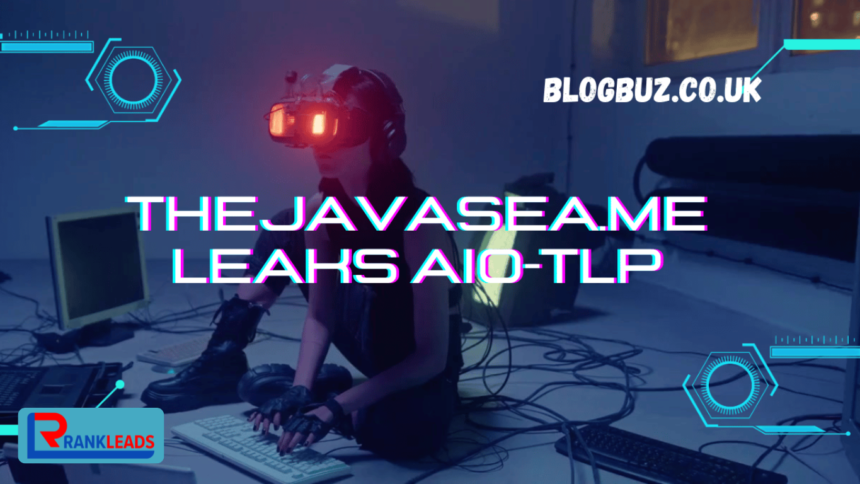In the digital era, data breaches and leaks have become significant issues that affect individuals, organizations, and even governments. One such prominent case is thejavasea.me leaks aio-tlp, which has drawn widespread attention due to its implications for privacy, security, and trust in online systems. This article explores the intricacies of thejavasea.me leaks aio-tlp, its impact, and steps to mitigate potential risks.
What Are thejavasea.me Leaks AIO-TLP?
Thejavasea.me leaks aio-tlp refers to instances where sensitive data is leaked and made publicly available on the platform thejavasea.me. The acronym “AIO-TLP” signifies “All In One – Traffic Light Protocol,” a system designed to classify and control access to sensitive data. Unfortunately, when these systems are compromised, private information becomes accessible to unauthorized users, leading to severe consequences.
The leaked content can range from personal information to corporate secrets, making it a matter of concern for cybersecurity professionals and affected individuals alike.

Why Are thejavasea.me Leaks AIO-TLP Alarming?
Data leaks like thejavasea.me leaks aio-tlp are alarming for several reasons:
Compromise of Confidentiality
The breach of sensitive data undermines the trust users place in digital platforms and their protective measures.
Widespread Impact
Leaks often affect multiple stakeholders, including individuals, organizations, and institutions, amplifying their ramifications.
Accessibility of Data
The ease with which leaked data is shared and accessed exacerbates its impact, making containment nearly impossible.
Security Implications
These leaks expose vulnerabilities in systems that need immediate attention, pushing organizations to strengthen their cybersecurity infrastructure.
Types of Data Involved in thejavasea.me Leaks AIO-TLP
Leaks of this nature typically involve a variety of data types:
Personal Data
Information such as names, addresses, and identification numbers that can lead to identity theft and fraud.
Corporate Secrets
Trade secrets, financial reports, and strategic plans that, when exposed, can damage a company’s competitive position.
Multimedia Files
Photos, videos, and other proprietary media that might violate copyrights or privacy.
Authentication Data
Usernames, passwords, and other login credentials that pave the way for further unauthorized access.
Private Communications
Emails and messages that, when leaked, can lead to reputational damage and misinterpretation.

How Do thejavasea.me Leaks AIO-TLP Occur?
The process of a leak typically follows these steps:
Exploitation of Vulnerabilities
Hackers identify and exploit weaknesses in security systems to access sensitive information.
Data Extraction
Once inside the system, they extract data categorized under AIO-TLP, bypassing its intended protective measures.
Public Distribution
The extracted data is uploaded to platforms like thejavasea.me, making it available to a wider audience.
Misuse of Data
The leaked data is then used for malicious purposes, including identity theft, fraud, or competitive sabotage.
Impacts of thejavasea.me Leaks AIO-TLP
The consequences of thejavasea.me leaks aio-tlp are severe and multifaceted:
For Individuals
Victims face financial losses, loss of privacy, emotional distress, and potential harassment.
For Organizations
Businesses experience financial setbacks, loss of intellectual property, and damage to brand reputation.
For Governments and Institutions
Leaks involving sensitive governmental data can lead to national security risks and international tensions.
For Society
The erosion of trust in online platforms and systems prompts concerns about digital safety and privacy.
Steps to Mitigate the Risks of thejavasea.me
Preventing and minimizing the impact of leaks requires a combination of proactive measures:
Strengthening Cybersecurity Systems
Investing in robust technologies, such as encryption and firewalls, can prevent unauthorized access.
Regular Security Audits
Frequent assessments help identify and address vulnerabilities in existing systems.
Educating Users and Employees
Training individuals to recognize and avoid potential threats, such as phishing scams, reduces the likelihood of breaches.
Implementing Two-Factor Authentication
Adding an extra layer of security makes unauthorized access more difficult.
Monitoring Data Access
Keeping track of who accesses sensitive data can help detect unusual activity and prevent leaks.

FAQs About thejavasea.me Leaks AIO-TLP
1. What is AIO-TLP in the context of data leaks?
AIO-TLP, or “All In One – Traffic Light Protocol,” is a system for classifying and sharing sensitive data. Its breach signifies a major failure in maintaining confidentiality.
2. Who is most at risk from thejavasea.me?
Both individuals and organizations handling sensitive information, such as personal data or intellectual property, are at significant risk.
3. How can I protect myself from data leaks?
Use strong passwords, enable two-factor authentication, avoid sharing sensitive information online, and stay informed about cybersecurity practices.
4. What legal actions can be taken against data leaks?
Data leaks can lead to criminal charges, civil lawsuits, and regulatory penalties depending on the jurisdiction and the nature of the leak.
5. Is accessing leaked data illegal?
Yes, accessing or using leaked data without authorization is often illegal and may result in fines or imprisonment.
Conclusion
In conclusion, thejavasea.me leaks aio-tlp highlights the ongoing challenges of data security in the digital age. As leaks become more prevalent and damaging, it is imperative to adopt strong cybersecurity measures, increase awareness, and develop better regulations to protect sensitive information. By understanding the implications and taking proactive steps, both individuals and organizations can minimize their exposure to such risks and contribute to a safer online ecosystem.








